How to optimize the Taskbar space on Windows 10
On Windows 10, the Taskbar is probably one of the most essential features throughout the experience. This is a feature that gives you quick access to the Start menu, applications and notification area to check the time and date, as well as always update the system notifications.
However, the Taskbar has limited space and if you often work with multiple apps, you can quickly run out of space to pin more favorite apps. Thankfully, if you need more space, the taskbar is also customizable and there are a few ways you can optimize the Taskbar to fit all your applications.
In this tutorial, TipsMake.com will show you the steps to optimize the space on the Windows 10 taskbar.
Organize the Taskbar space on Windows 10
- Minimize or disable the search box
- Delete the Task View button
- Reduce the notification area space
- Delete system icon
- Switch to the smaller application icon
- Unpin unused applications
- Expand the taskbar on screens
How to organize taskbar space on Windows 10
If you want to keep the taskbar organized or may contain more apps, these instructions will help you customize the experience.
Minimize or disable the search box
The Windows 10 taskbar has a built-in search box that you can use to find files, launch applications, and get answers to common questions without having to open a web browser. Although this is a useful feature, the search box takes up a considerable amount of space.
If you don't use the search box, you can disable it or just show a button to access the experience.
To remove the search box from the taskbar, follow these steps:
1. Right-click the Taskbar.
2. Select the Search menu .
3. Select the Hidden option .
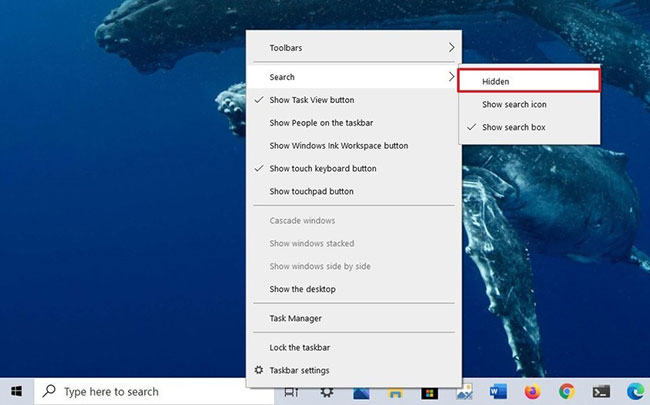 Clear the search box from the taskbar
Clear the search box from the taskbar If you still want to access to search from the taskbar, you can display only the single button with the following steps:
1. Right-click the Taskbar.
2. Select the Search menu .
3. Select the Show search icon option .
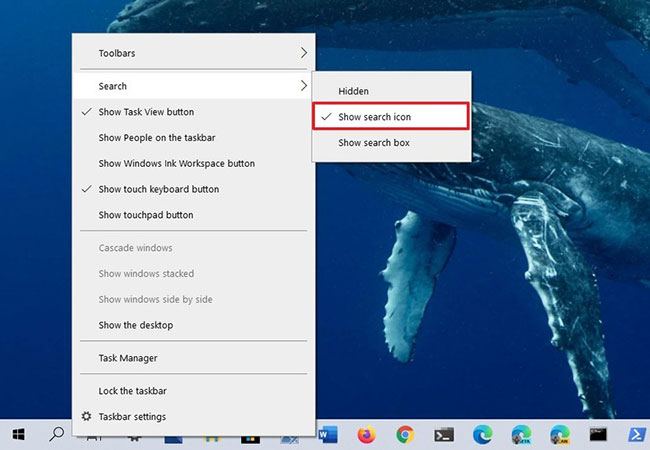 Displays a single button to search from the taskbar
Displays a single button to search from the taskbar In case you are disabling the option, remember that you can always click the Start button or press the key Winand start typing to invoke the search feature.
Delete the Task View button
Task View is a feature on Windows 10 that allows you to switch between applications and access virtual desktops. However, if it's not a feature you use often or you use the Win+ shortcut Tabto access the experience, then that icon is wasting valuable space.
To remove the Task View button from the taskbar, follow these steps:
1. Right-click the Taskbar.
2. Select the Show Task View button option .
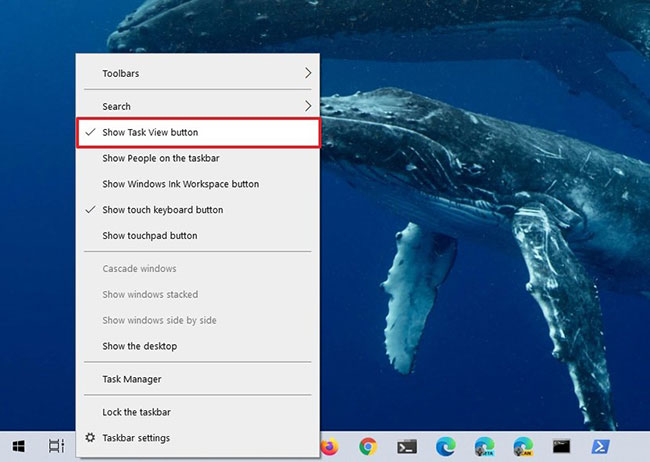 Delete the Task View button
Delete the Task View button Alternatively, you can hide the Task View button with instructions in the article: Hide the Search button and the Task View button on the Taskbar on Windows 10.
Reduce the notification area space
The right side of the taskbar is called the notification area. It provides status information, quick access to control specific features and applications, and displays the current date and time. However, depending on the application, the number of icons may increase, taking up valuable space.
To control the icons that appear on the taskbar, follow these steps:
1. Open Settings.
2. Click on Personalization.
3. Click Taskbar.
4. In the Notification area , click the Select which icons appear on the taskbar option .
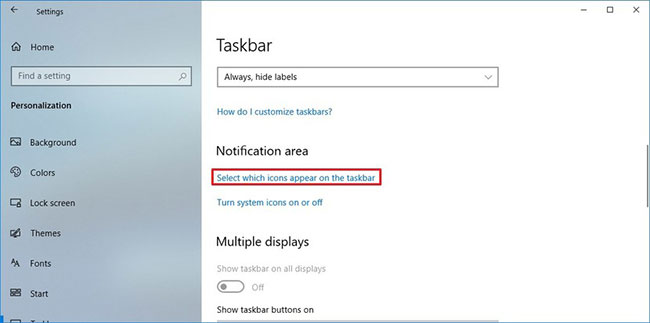 Click the Select which icons appear on the taskbar option
Click the Select which icons appear on the taskbar option 5. Turn off the Always show all icons in the notification area option .
6. Turn off the switch for the icons you do not want to see. For example, Network, Volume, Location , etc.
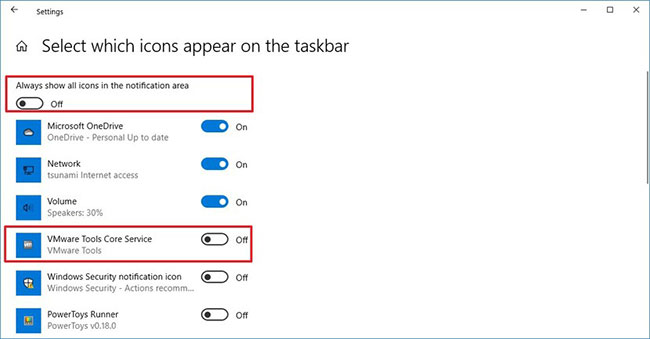 Turn off the switch for the icons you don't want to see
Turn off the switch for the icons you don't want to see Delete system icon
Using the Taskbar settings, you can also reduce the number of system icons and optimize the space on the taskbar with the following steps:
1. Open Settings.
2. Click on Personalization.
3. Click Taskbar.
4. In the Notification area , click the Turn system icons option on or off .
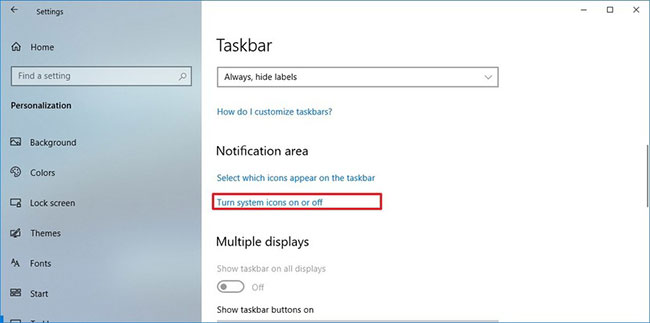 Click the Turn system icons on or off option
Click the Turn system icons on or off option 5. Turn off the switch for system icons that you want to delete from the notification area. For example: Clock, Volume, Network, Power, Action Center , etc.
Switch to the smaller application icon
Windows 10 also includes an option to make the taskbar icons smaller. This can help you free up space to pin more apps in the same space.
To use small icons on the taskbar, follow these steps:
1. Open Settings.
2. Click on Personalization.
3. Click Taskbar.
4. Turn on the Use small taskbar buttons switch .
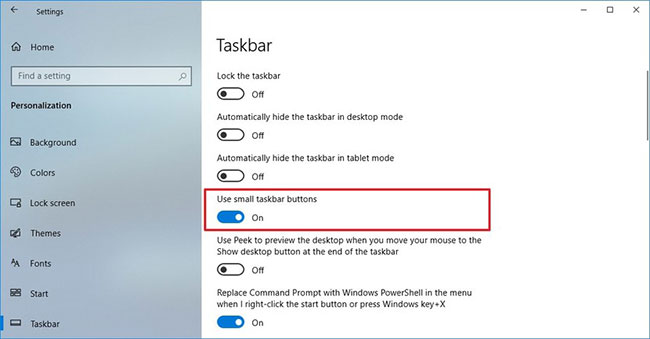 Turn on the Use small taskbar buttons switch
Turn on the Use small taskbar buttons switch Unpin unused applications
Another easy way to optimize the space on the taskbar is to remove pinned apps that you don't use often.
To unpin an application from the taskbar, follow these steps:
1. Right-click the application on the taskbar.
2. Select the Unpin from taskbar option .
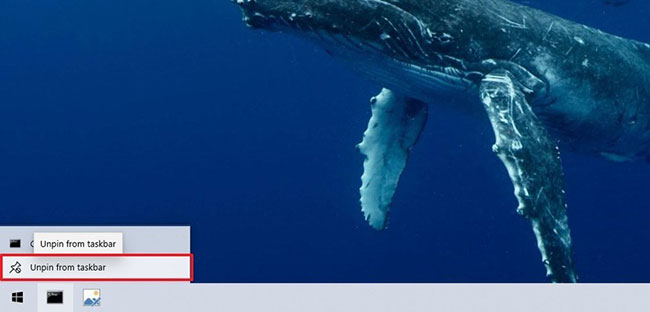 Select the Unpin from taskbar option
Select the Unpin from taskbar option Expand the taskbar on screens
If you have multiple monitors set up, you can get more space on the taskbar by expanding it across all screens.
To display the taskbar on all screens, follow these steps:
1. Open Settings.
2. Click on Personalization.
3. Click Taskbar.
4. In the Multiple display section , turn on the Show taskbar on all displays switch .
5. Use the Show taskbar buttons on drop-down menu and select the Taskbar where the window is open option to toggle the pinning of a running application to the screen where it is currently open.
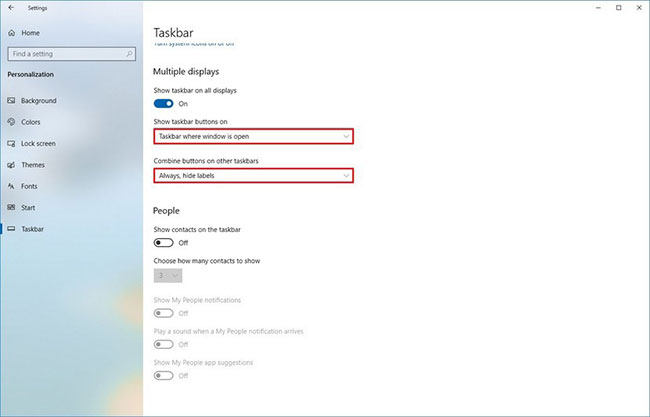 Use the Show taskbar buttons on drop-down menu and select the Taskbar where the window is open option
Use the Show taskbar buttons on drop-down menu and select the Taskbar where the window is open option 6. Use the Combine buttons on other taskbars drop-down menu and select the Always, hide labels option .
When you complete these steps, you get a taskbar with more space to pin all your favorite apps.
You should read it
- How to hide the Taskbar on Windows 11
- How to Hide the Windows Taskbar
- How to fix Windows 11 Taskbar not working
- How to add wallpaper to taskbar on Windows 10
- This application can bring drag and drop back to the Windows 11 taskbar
- After all, Microsoft seems to be working on moving the taskbar feature on Windows 11
 Fix 'Could Not Find This Item…' error in Windows 10
Fix 'Could Not Find This Item…' error in Windows 10 How to install AV1 codec in Windows 10
How to install AV1 codec in Windows 10 How to create a battery usage chart on Windows 10
How to create a battery usage chart on Windows 10 How to turn on the front audio port of the computer on Windows 10
How to turn on the front audio port of the computer on Windows 10 Instructions on how to update Windows 10 free and simple
Instructions on how to update Windows 10 free and simple How to delete Account, User in Win 10
How to delete Account, User in Win 10